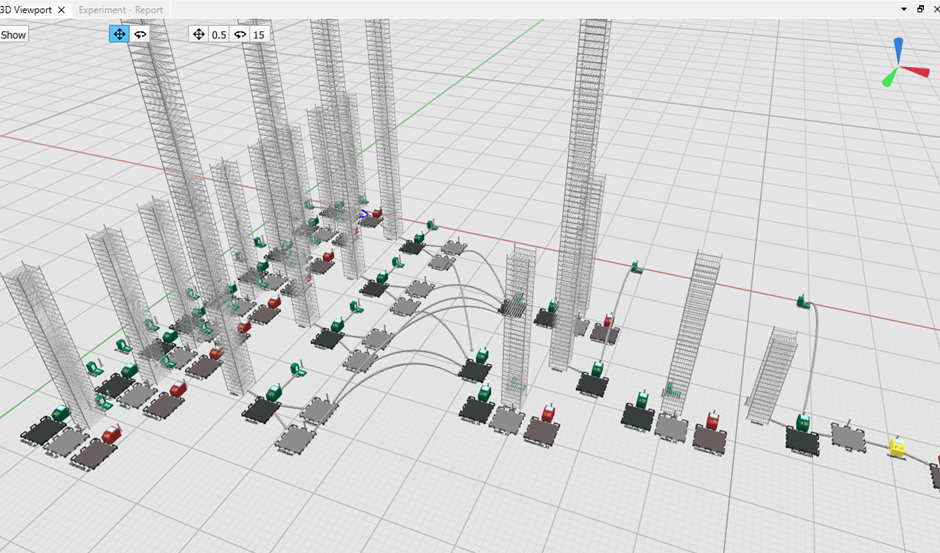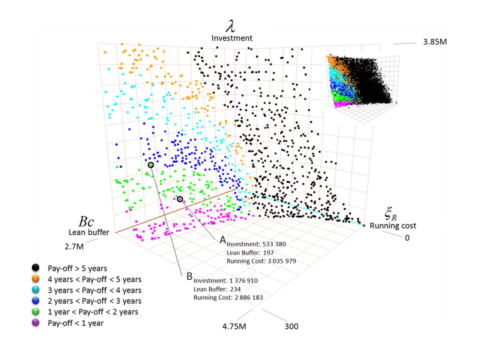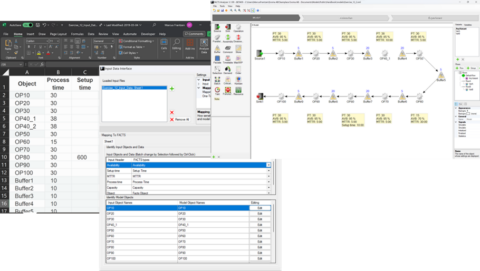Optimizing Factory Performance
A discrete parts manufacturer in the automotive industry faced difficulties in managing a multi-step production system with parallel machining, assembly, and final assembly flows. Variations in shift schedules and process constraints made it challenging to maintain a smooth and efficient operation across the entire factory.

Challenge
A production facility struggled with high buffer levels, long lead times, and inefficiencies in product sequencing. These issues led to:
- Increased production costs due to excessive material storage.
- Delays in production flow impacting delivery timelines.
- Difficulty in balancing shift work and workforce allocation.
Solution
With FACTS Analyzer*, the company could:
- Reduce buffer and store levels while ensuring uninterrupted production.
- Analyze and optimize product sequences to minimize wait times.
- Evaluate different shift configurations for increased efficiency.
Results
- 25% reduction in buffer/store levels.
- Shorter lead times, improving overall factory performance.
- Optimized shift patterns leading to improved workforce utilization.
Conclusion
With data-driven insights and simulation-based optimizations, the company achieved higher productivity, reduced operational costs, and improved production flow.
*FACTS Analyzer was the previous generation of inFACTS Studio, built on a 2D environment.


